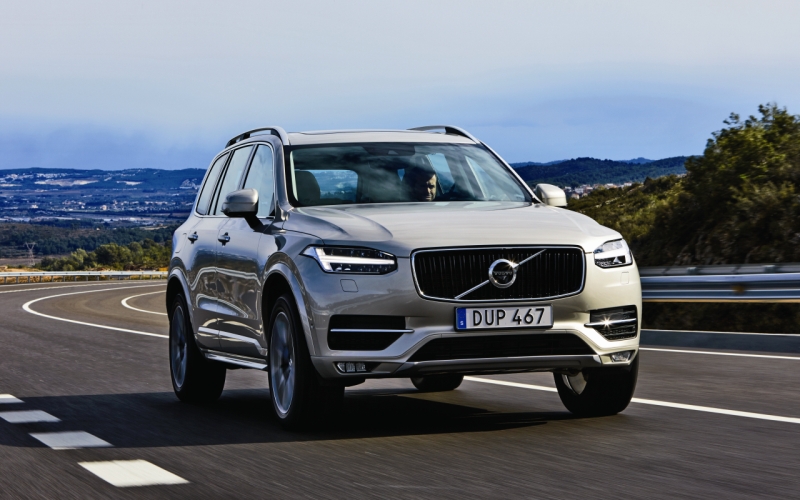Volvo have introduced the second-generation XC90 a baker’s dozen years after the first one began grabbing eyeballs and headlines. With world-first safety features and immense flexibility, how fresh and desirable is the new one? Will it sell like hot cakes? Car India goes to Spain to sample it.
Story: Jim Gorde
Photography: Jim Gorde & Volvo Car Corporation
How much is enough? Apart from the dictionary definition, there is no constant, no certain measure of ‘enough’. It varies, and it varies in several aspects. For some it’s value, for others, it’s power, while for yet some others, it’s safety and a lot more. It’s about finding the balance and taking a giant leap forward. And, when a creation first shows up, new to the world, and does what it promised very well, the next coming should surely be, well, more than enough.
The first Volvo XC90 arrived in 2002, setting the benchmark for what practical seven-seater family cars were supposed to be like. Yes, there were many cars that promised everyday practicality and a child-friendly layout, but did they truly deliver? That was always a matter of debate. Yes, on grounds of safety and practicality, it did very well. But keeping up with the changing times is where it began slowing down. The new car, then, had to do better than the old one did in every aspect, and yet, bring style, design, equipment and cleaner mobility, not just to save face in the competitive markets of today, but to stand out.
Of course, it’s a Volvo, so with new design and cleaner motors, the safety kit raises the benchmark yet again. Yes, there are bright, shiny LEDs and big, gleaming alloy wheel-rims, there’s premium leather and a bangin’ stereo system, but what the customer doesn’t see is probably more important.
The fact that the car could potentially save the lives of the driver and their entire family is something that is usually dismissed with a wave of the hand, especially in India. “Not me, I’m a good driver.” Maybe so, but while one may be a great driver, that does not mean that they can control the other vehicles on the road, in the hand of road users who may or may not possess the required skill to evade a collision in a car which, in all probability, will have neither anti-lock brakes nor airbags, let alone traction or stability control. That is the truth about the Indian market, and its norms completely ignoring active and passive safety thus far; 2017 couldn’t come fast enough.
For those who value automotive safety and appreciate an updated, contemporary design paired with it, and, of course, have the pockets to go out and buy a car of that calibre, the all-new Volvo XC90 does not disappoint. From the outset, the car was designed to be future-proof, more or less, and has been built from the ground up, with maybe a bolt or two being the most shared with the first-gen model. With new drivelines and some world-first safety features, the XC90 has something to drop everyone’s jaw. It is the first model from the company to be built on the Scalable Product Architecture platform; it brings in more room, safer construction and weight reduction as a result. The chassis is now constructed with more boron-steel than before, making it not just stronger, but also much lighter, with a drop of about 200 kg. The XC90 D5 AWD weighs in at just about two tonnes, but now packs a more efficient, yet more powerful four-cylinder motor.




















Volvo T8 Excellence India Launch on 14 September | Car India : The World's Best Car Magazine
[…] Excellence is essentially a 2+2 seater super-luxury version of the XC90. That it packs their T8 Twin Engine hybrid driveline is another new headline for India. The cabin features no third row, with a […]